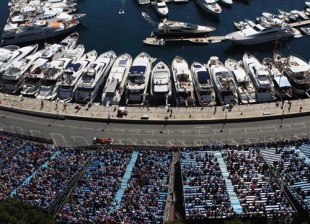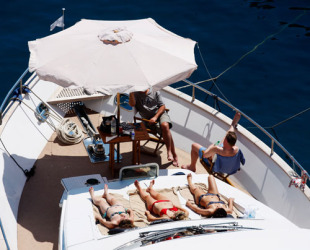- Formula Money
Monaco's pulling power

F1 is famous for being tough to sustain as a race promoter. As the sport's number of viewers has accelerated to over 500m so too have the average fees to host races, which now stand at $31.2m annually. This rise has been driven by emerging markets such as Singapore and China paying top dollar to get on the calendar and use the sport as a platform to promote tourism. They can afford the sky-high fees because the governments back this marketing strategy. Every penny counts since the sport's rights holder, the F1 Group, receives all the revenues from trackside advertising, TV rights and corporate hospitality at the races. The only exception to this is the race which, it is said, brings more to F1 than F1 brings to it: Monaco
If ever there was a championship for the best value for money deal in F1 then the Monaco GP would surely take the victory. The race promoter, the Automobile Club de Monaco (ACM), is one of only a handful of circuit operators which takes all the revenue from trackside advertising and this alone totalled $16.3m in 2008. Monaco is also the only circuit which hosts F1 without paying fees, and since these average at $28m annually, it is a huge saving.
These concessions come from its history on the F1 calendar which pre-dates the creation of the world championship itself as the race was first run in 1929. It is one of motor racing's prestigious 'Triple Crown' along with the Indianapolis 500 and the 24 Hours of Le Mans. The only other circuit on the F1 calendar with a similar status is Monza which is home to the Italian GP and has held more F1 races than any other venue. This entitles Monza to a small race hosting fee but not the nil fee awarded to Monaco. It puts the street race through the tiny principality on a firm financial footing but it is the trackside advertising gain which is one of its biggest boons.
"Advertising is one of the takings which makes up, with those from grandstand ticket sales, the means to recoup the necessary funds to put on the event," says ACM president Michel Boeri adding that "it is true that other circuits prefer to delegate the charge of this activity. This isn't the case with Monaco." It pays off.
Monte Carlo has the smallest capacity of all the circuits at just 37,000 (22,000 grandstands and 15,000 general admission) although unlike other circuits it has a significant non-ticketed attendance. "Over the four days of the event it can be estimated quite precisely that there are around 200,000 spectators who follow the grand prix from the grandstands, the balconies of the buildings around the circuit and also from the boats in the harbour," says Boeri.
He adds that "of course Sunday is the peak day: the city literally explodes. It is estimated that there are 100,000 people present in the principality which ordinarily has a resident population of 30,000 inhabitants." They fill Monaco's tiny 1.95sq km footprint to bursting but it is the streets, not the state's borders, which need reinforcing.
Transforming a city into a race circuit is a far from an easy task. "The construction waiting periods were reduced, to optimise business use, to six weeks of construction and two weeks of deconstruction," says Boeri. Around 1,100 tonnes of grandstands, 900 tonnes of pit garages and 33 kilometres of barrier are used and a permanent team of 50 Monaco engineers are in charge of the installation.
These high overheads mean that although Monaco pays no race hosting fee, keeps all its trackside advertising revenues and has ticket prices starting at $194 and rising to $958, according to Boeri "the takings from the Grand Prix are less than the expenditure." He explains that the ACM receives a state subsidy of $7m to host the GP and with this included, the total budget for the race is around $35m.
However, the ACM's subsidy is far from the highest on the calendar, which is the $60m paid to fund F1's other street race in Singapore. But as a result of Monaco's unparalleled allure, the state's $7m gets one of the highest returns on investment. F1's industry monitor Formula Money estimates that Monaco's turnover from the race is around $120m with the bordering towns, such as Menton in France and Ventimiglia in Italy, taking a total of $12m annually. Boeri says that VAT revenues largely cover the state subsidy and they don't just roll in during the race weekend.

It is a dream package of promotion for Monaco and Boeri modestly remarks that "our marketing plan is quite well balanced." However, he adds, "for all that, never count on anything." His caution is hardly surprising since nothing is ever certain in a state so closely connected with gambling. Nevertheless, when it comes to making money in motorsport, the Monaco GP is the safest bet in town.

